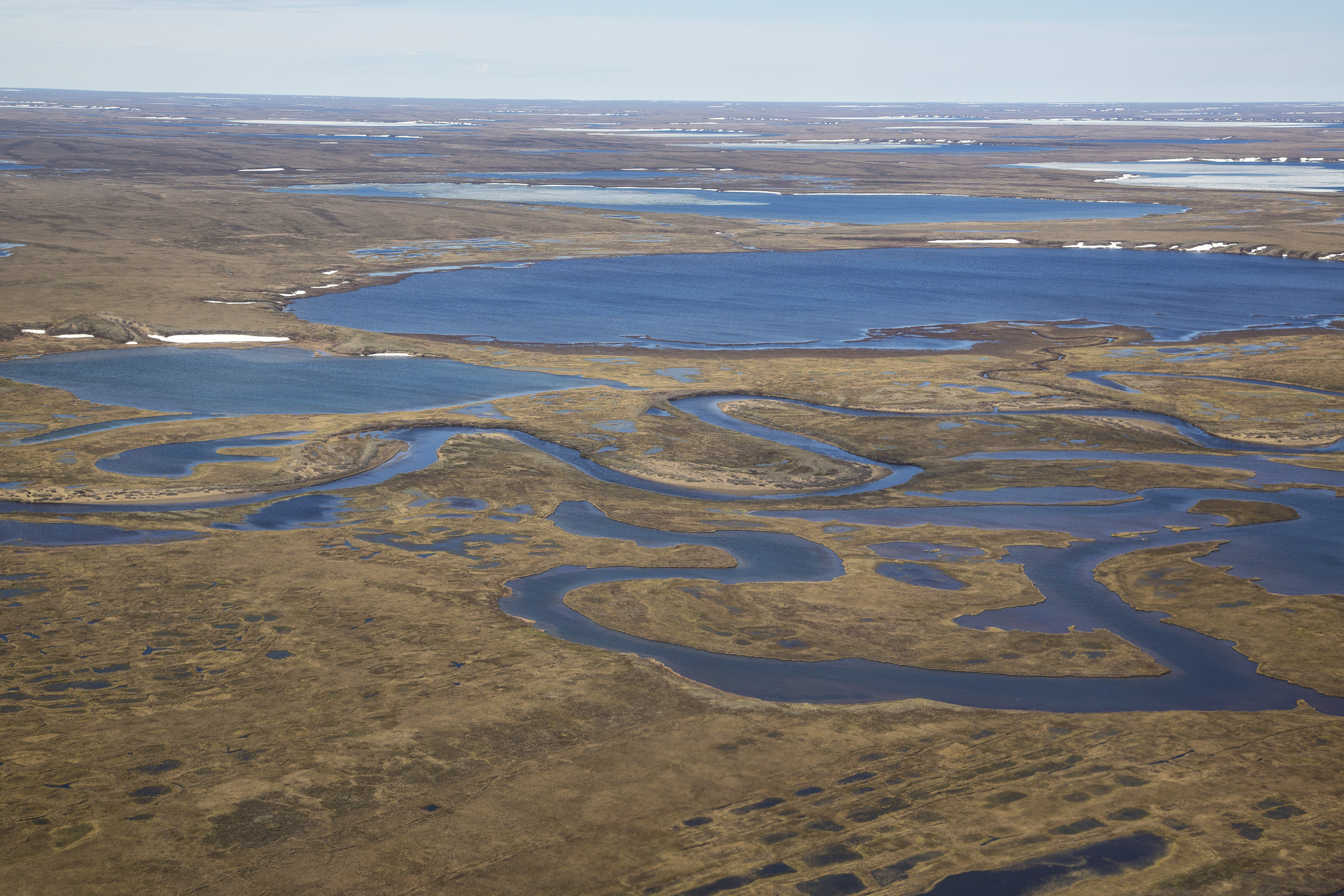Trump administration schedules another Arctic oil lease sale amid push for more Alaska drilling
The NPR-A lease sale takes place in December. Meanwhile, officials are pushing to open far more of the reserve to future drilling.

The Trump administration is putting oil leases for 3.98 million acres of federal lands in Arctic Alaska on the auction block next month, part of a wider policy to encourage more development in Alaska.
The Bureau of Land Management on Tuesday announced its annual oil lease sale in the National Petroleum Reserve Alaska will be held on Dec. 11, with bids due two days prior.
The sale will be the 15th since 1999 in the 23 million-acre reserve, also known as NPR-A.
Much more acreage could be eventually opened up for oil development if the Trump administration follows through with plans to rewrite the reserve’s Obama-era Integrated Activity Plan, which was put into effect in 2013. The BLM is completing a draft environmental impact statement for a new plan that would remove many of the Obama-era protections for wildlife, migratory birds, cultural resources and Alaska Native subsistence uses. The rewrite was launched in the early days of the Trump administration in an order from then-Secretary of the Interior Ryan Zinke that also promoted oil development in the Arctic National Wildlife Refuge and more leasing in federal offshore areas of the Arctic Ocean.
In a statement Tuesday, Chad Padgett, the BLM’s Alaska state director, said expanded leasing in the vast land unit was justified.
“With advancements in drilling technology, it was prudent to develop a new plan that provides for greater economic development of our resources while still providing protections for important resources, such as subsistence uses,” he said in the statement.
The draft EIS for the new NPR-A plan is expected to be released in the next few weeks, said Lesli Ellis-Wouters, a spokeswoman for the BLM in Anchorage.
Environmental groups are fighting to retain the protections established in the Obama-era plan. That plan, which established protections for five areas with particularly sensitive and important characteristics, was balanced and carefully crafted plan, Leah Donahey, legislative director for the Alaska Wilderness League, said in a statement.
“Throughout this multi-year process, the vast majority of public comments supported strong protections for Reserve Special Areas. Abandoning this science-based, common-sense approach now in favor of oil and gas interests is reckless and makes a mockery of Interior’s planning process,” she said.
The Dec. 11 lease sale — which coincides with Alaska Division of Oil and Gas lease sales for state territory on central North Slope, in the Beaufort Sea and in the Brooks Range foothills — is not connected to that rewrite.
It offers 350 tracts for leasing, but only four of them are within the area in the reserve’s northeastern corner that is considered highly prospective for oil. The northeastern corner is where the 215 currently held leases are clustered and where the North Slope’s westernmost exploration and development is concentrated.
The NPR-A, the largest U.S. federal land unit, was established in 1923 by President Warren Harding as a source of energy for the U.S. Navy. But there was little industry interest in the area and only sporadic exploration until the end of the 20th century, after the Alpine field was discovered on state land on the eastern edge of the reserve. The first commercial production of oil from within the reserve’s boundaries happened in 2015 at the ConocoPhillips-operated CD-5 field. Late last year the company started up production farther west at its Greater Mooses Tooth site.
ConocoPhillips remains the most active company in the reserve and in the Colville River Delta lands just adjacent to it.
The company last winter had its busiest exploration season since 2002, drilling eight wells and doing eight well tests. Last winter’s work focused on prospects within NPR-A — including the Willow discovery and the Harpoon prospect to its southwest. This winter, ConocoPhillips plans an exploration season that is nearly as big, with up to seven exploration wells and a continued focus on Willow, Harpoon and the Narwhal prospect that is on land along the eastern border of the reserve, according to a company presentation.
The BLM is drafting an environmental impact statement for the Willow development, a project that, if constructed and put into operation, could produce 100,000 barrels a day, according to ConocoPhillips.
ConocoPhillips is also planning construction this winter at its Greater Mooses Tooth-2 field within the reserve, with first oil production expected in 2021. The field will have peak output of 35,000 to 40,000 barrels per day, according to the company.
Environmentalists and the tribal government in Nuiqsut, the Inupiat village closest to the new oil projects, have opposed what they characterize as a too-speedy exploration program in the reserve.
A lawsuit filed by the village and several environmental groups seeks to overturn the BLM’s approval of ConocoPhillips’ program for exploration last winter. The BLM failed to properly study the impacts to caribou and to subsistence activities, says the complaint, which calls for a full environmental impact statement instead of the abbreviated environmental assessment that the agency conducted.
Oral arguments were heard last month in U.S. District Court in Anchorage, and a decision in the case is pending.